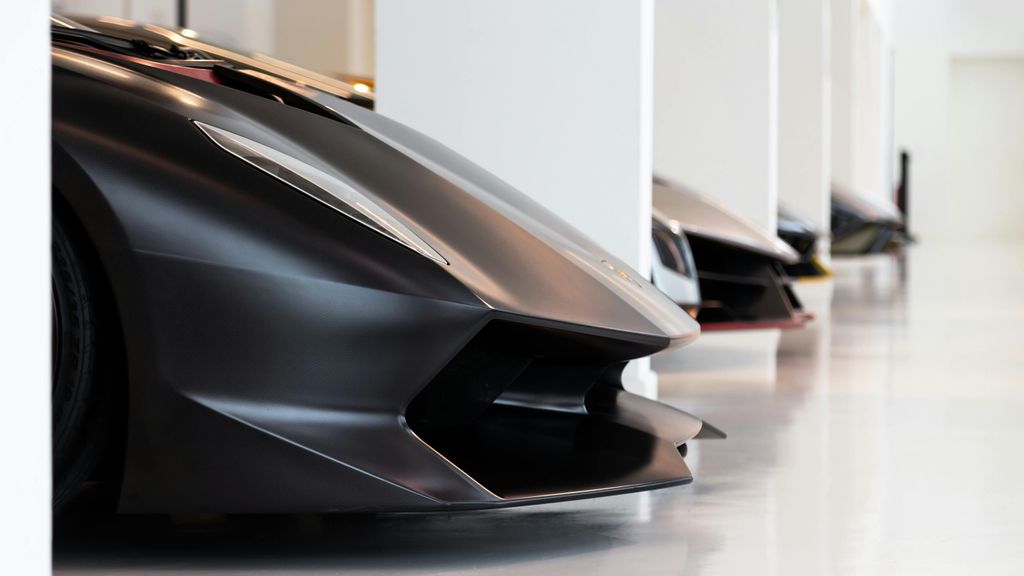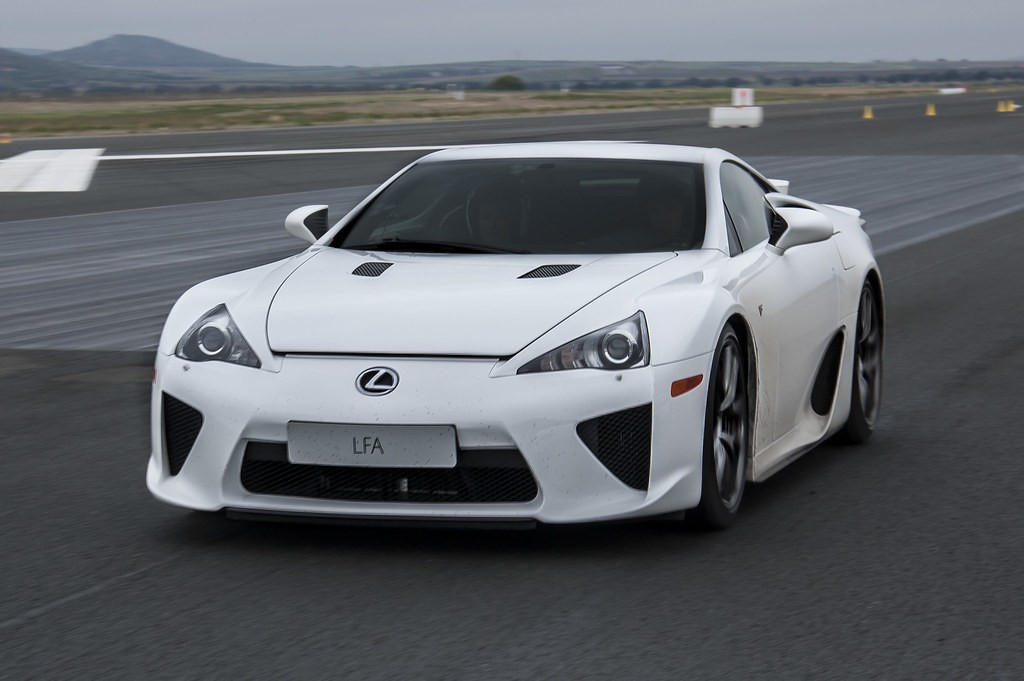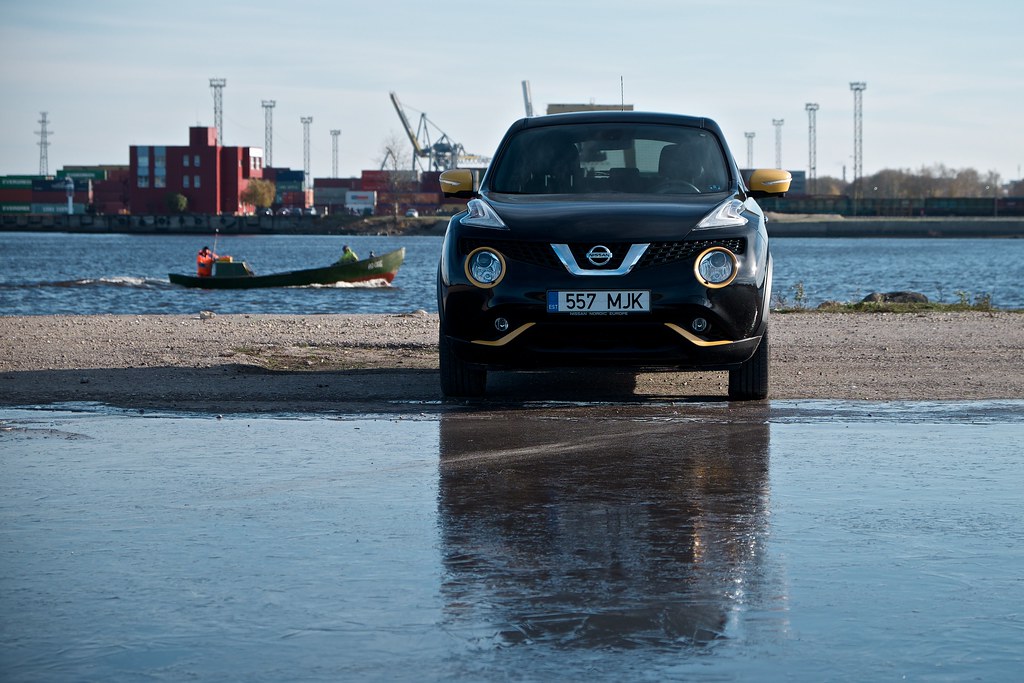
The automotive world is a dynamic landscape, where models appear, evolve, and eventually fade from production. Yet, the story doesn’t always end with discontinuation. For many vehicles, leaving the assembly line marks the beginning of an entirely new chapter, one where desirability, rarity, and cultural significance can transform a humble commuter into a prized collector’s item, or conversely, consign an ambitious project to the annals of automotive failure.
Understanding why certain discontinued cars appreciate dramatically while others remain perpetual depreciators offers a fascinating glimpse into the factors that truly influence a vehicle’s long-term value. It’s a complex interplay of engineering excellence, iconic design, motorsport pedigree, limited production runs, and even unforeseen cultural phenomena that coalesce to determine whether a car becomes a coveted treasure or a forgotten mistake.
This deep dive will explore some of the most compelling examples from both ends of this spectrum. We’ll examine the stories of cars that, against all odds or sometimes precisely because of them, have skyrocketed in worth, becoming legends cherished by enthusiasts and collectors worldwide. Alongside these automotive gems, we’ll also cast a critical eye on those models that, despite their initial promise or unique aspirations, unfortunately, stayed ‘junk,’ offering little to no return on investment and serving as cautionary tales in the ever-shifting classic car market.
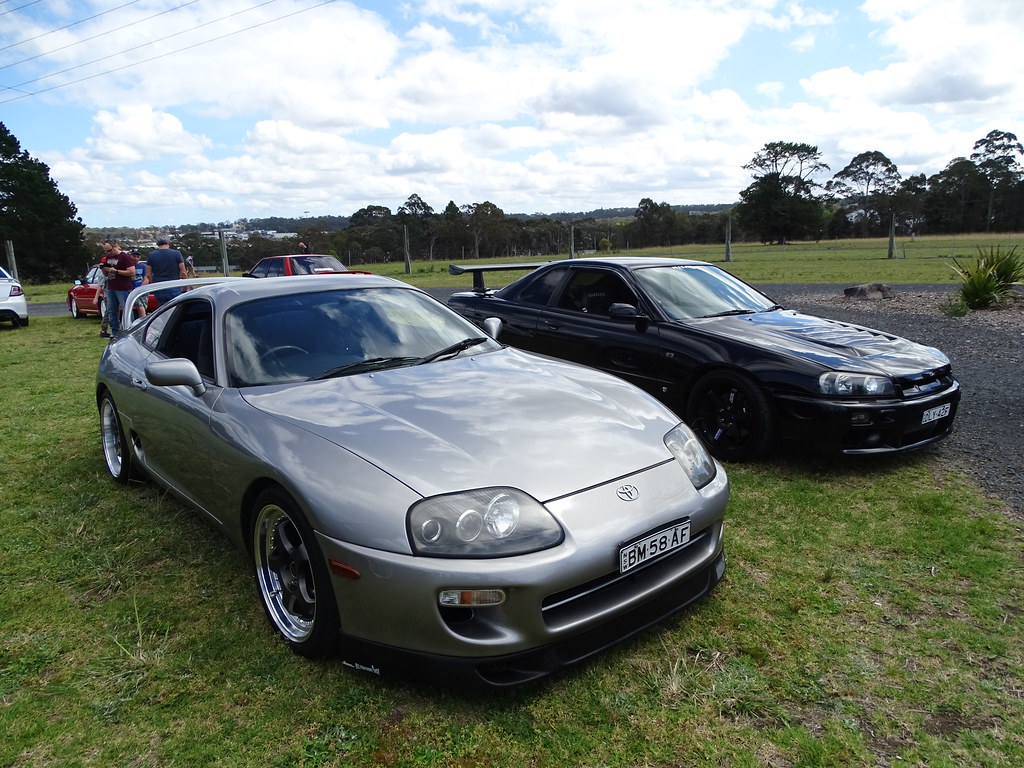
1. **Toyota Supra MK4 (1993–2002)**The Toyota Supra MK4 is widely regarded as one of the most iconic Japanese sports cars ever made, and it has become a legend among car enthusiasts worldwide. When it debuted in the early 1990s, it was praised for its blend of advanced engineering, power, and reliability.
The MK4 Supra’s standout feature is its 3.0-liter 2JZ-GTE inline-six engine, a twin-turbocharged powerhouse capable of handling immense horsepower with stock internals. This engine’s robustness and tuning potential made the Supra a favorite in the tuning and racing communities, allowing enthusiasts to push the car to extremely high performance levels without major modifications.
Despite these strengths, the Supra was moderately priced during its production run and was seen by many as a niche sports car, which limited its initial market. However, its value has skyrocketed in recent years due to a combination of factors. The car’s starring role in the “Fast & Furious” franchise gave it worldwide fame and introduced it to a younger generation of fans, many of whom now seek to own a piece of that legacy.
Additionally, the MK4 Supra was discontinued in 2002, and for many years, the import restrictions in some countries—like the US 25-year rule—limited availability of clean, original models. As a result, supply has become scarce while demand grew. Well-preserved, low-mileage examples now routinely fetch prices well into six figures. Collectors prize original condition, factory turbocharged models, and cars with rare colors or special editions. Beyond its power and performance, the Supra is known for its timeless design that remains relevant and desirable decades later.
In essence, the Supra MK4’s combination of engineering excellence, cultural impact, and rarity transformed it from an affordable sports car into a highly collectible and valuable modern classic. Its status as a tuner icon, combined with limited availability, continues to push prices higher, making it one of the best examples of a discontinued car whose value skyrocketed.
Car Model Information: 2023 Alfa Romeo Stelvio Ti
Name: Toyota Supra
Caption: Toyota GR Supra (J29/DB)
Manufacturer: Toyota
Aka: unbulleted list
Production: unbulleted list
Class: Sports car
BodyStyle: fastback,coupé
Layout: Front-engine, rear-wheel-drive layout
Predecessor: Toyota Celica (A20)
Categories: 1980s cars, 1990s cars, 2000s cars, 2010s cars, 2020s cars
Summary: The Toyota Supra (Japanese: トヨタ・スープラ, Hepburn: Toyota Sūpura) is a sports car and grand tourer manufactured and developed by the Toyota Motor Corporation beginning in 1978. The name “supra” is a definition from the Latin prefix, meaning “above”, “to surpass” or “go beyond”.
The initial four generations of the Supra were produced from 1978 to 2002. The fifth generation has been produced since March 2019 and later went on sale in May 2019. The styling of the original Supra was derived from the Toyota Celica, but it was longer. Starting in mid-1986, the A70 Supra became a separate model from the Celica. In turn, Toyota also stopped using the prefix Celica and named the car Supra. Owing to the similarity and past of the Celica’s name, it is frequently mistaken for the Supra, and vice versa. The first, second and third generations of the Supra were assembled at the Tahara plant in Tahara, Aichi, while the fourth generation was assembled at the Motomachi plant in Toyota City. The 5th generation of the Supra is assembled alongside the G29 BMW Z4 in Graz, Austria by Magna Steyr.
The Supra traces much of its roots back to the 2000GT owing to an inline-6 layout. The first three generations were offered with a direct descendant to the Crown’s and 2000GT’s M engine. Interior aspects were also similar, as was the chassis code “A”. Along with this name, Toyota also included its own logo for the Supra. It was derived from the original Celica logo, being blue instead of orange. This logo was used until January 1986, when the A70 Supra was introduced. The new logo was similar in size, with orange writing on a red background, but without the dragon design. That logo, in turn, was on Supras until 1991 when Toyota switched to its current oval company logo. The dragon logo was a Celica logo regardless of what colour it was. It appeared on the first two generations of the Supra because they were officially Toyota Celicas. The dragon logo was used for the Celica line until it was also discontinued.
In 1998, Toyota ceased sales of the fourth-generation Supra in the United States. Production of the fourth-generation Supra for worldwide markets ended in 2002. In January 2019, the fifth-generation Supra, which was co-developed with the G29 BMW Z4, was introduced.
Get more information about: Toyota Supra
Buying a high-performing used car >>>
Brand: Toyota Model: Supra MK4
Price: $31,450 Mileage: 29,946 mi.

2. **BMW E30 M3 (1986–1991)**The BMW E30 M3 is often heralded as one of the greatest performance cars of the 1980s, blending exceptional driving dynamics, motorsport pedigree, and classic styling. It was BMW’s answer to homologation requirements, designed to dominate touring car racing.
Built on the compact and lightweight E30 chassis, the M3 featured a naturally aspirated 2.3-liter inline-four engine, the S14, which produced about 192 horsepower in its original European spec and more in later versions. The car was engineered with a focus on balance, sharp handling, and driver engagement, characteristics that still earn it praise today.
What truly sets the E30 M3 apart is its motorsport heritage. It won numerous championships worldwide, cementing BMW’s reputation in racing and attracting a dedicated fanbase of enthusiasts who appreciate its combination of precision and raw driver feedback. Its iconic boxy design, with widened fenders, aggressive aerodynamic features, and the distinct rear spoiler, became a symbol of ‘80s performance.
Despite its strong credentials, the E30 M3 was produced in limited numbers—approximately 17,000 units worldwide, with some versions and markets even scarcer. This scarcity has contributed to a steady increase in values over the years. Moreover, the car’s reputation for being mechanically straightforward, reliable, and rewarding to drive has made it a favorite for both collectors and drivers alike. Modern classic car buyers prize clean, original examples, particularly those with full service records and limited modifications.
The E30 M3’s blend of race-bred engineering and classic styling has made it a timeless classic. Enthusiasts see it as the last “pure” M3 before the model line became more complex and heavier, increasing its desirability. In short, the E30 M3’s combination of rarity, motorsport success, and engaging driving experience explains why it commands thousands of dollars in today’s classic car market, proving that some discontinued cars are worth much more than their original price tags.
Car Model Information: 2023 Alfa Romeo Stelvio Ti
Name: BMW M3
Caption: 2021 BMW M3 Competition (G80)
Manufacturer: BMW M
Production: unbulleted list
Class: Compact executive car
Layout: unbulleted list
Related: unbulleted list
Categories: 1990s cars, 2000s cars, 2010s cars, 2020s cars, All Wikipedia articles written in British English
Summary: The BMW M3 is a high-performance version of the BMW 3 Series, developed by BMW’s in-house motorsport division, BMW M GmbH. M3 models have been produced for every generation of 3 Series since the E30 M3 was introduced in 1986.
The initial model was available in a coupé body style, with a convertible body style made available soon after. M3 saloons were offered initially during the E36 (1994–1999) and E90 (2008–2012) generations. Since 2014, the coupé and convertible models have been rebranded as the 4 Series range, making the high-performance variant the M4. Variants of the 3 Series since then have seen the M3 produced as a saloon, until 2020, when the M3 was produced as an estate (Touring) for the first time, alongside the saloon variant.
Get more information about: BMW M3
Buying a high-performing used car >>>
Brand: BMW Model: E30 M3
Price: $31,450 Mileage: 29,946 mi.
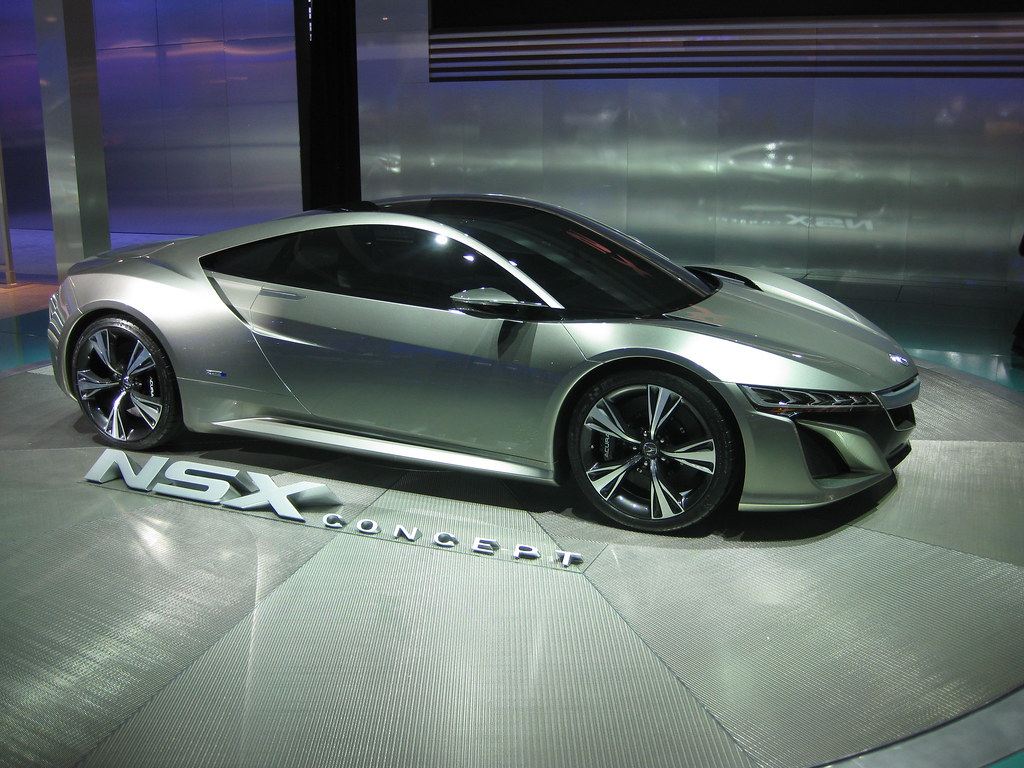
3. **Acura NSX (First Generation, 1990–2005)**The first-generation Acura NSX broke new ground when it was introduced in 1990. It challenged the notion that exotic sports cars had to be fragile and expensive to maintain by offering supercar performance combined with Honda’s renowned reliability and build quality. Developed with input from legendary Formula 1 driver Ayrton Senna, the NSX was revolutionary in its engineering.
Its lightweight aluminum body, mid-engine layout, and advanced suspension setup allowed it to deliver a driving experience that rivaled European exotics like Ferrari and Porsche while remaining easier to live with. Powered by a high-revving 3.0-liter V6 producing around 270 horsepower initially, the NSX later received a larger 3.2-liter engine, improving power and refinement. The car’s precision, balance, and predictable handling set new standards for mid-engine supercars.
Unlike many of its rivals, the NSX was praised for its smooth power delivery and reliability, making it a car that owners could drive daily, unlike fragile exotics. Despite its brilliance, the NSX was discontinued in 2005, partly due to shifting market demands and the rise of turbocharged competitors.
However, its status as a pioneer in the supercar segment has grown over time, with collectors recognizing its blend of performance, technology, and usability. Limited production numbers—just over 18,000 units worldwide—and the fact that many have been well-maintained contribute to rising values. The NSX’s cult following and status as the first true Japanese supercar have helped it command premium prices in the collector market. Enthusiasts seek out early models, especially those in excellent condition with manual transmissions, and these examples often sell for tens of thousands above their original MSRP.
Overall, the Acura NSX’s combination of engineering innovation, everyday drivability, and limited availability make it a discontinued car whose value has appreciated substantially, establishing it as a modern classic.
Car Model Information: 1992 Acura NSX Base
Name: Honda NSX
Caption: Acura NSX (first generation, NA2) along with some NA1 NSX cars
Manufacturer: Honda
Aka: Acura NSX (North America)
Production: 1990–2006 (NA1/2),2016–2022 (NC1/2)
Class: Sports car
ModelYears: 1991–2006,2017–2023
Categories: 2000s cars, 2010s cars, 2020s cars, 24 Hours of Le Mans race cars, All-wheel-drive vehicles
Summary: The Honda NSX (sold in North America as the Acura NSX) is a two-seater sports car manufactured by Honda over two generations. The first generation was produced from 1990 until 2006, whilst the second generation was made from 2016 to 2022. The first generation was introduced as a two-door coupé, with a two-door targa top variant later added, and has a rear mid-engine, rear-wheel-drive layout. The second generation is only a coupé, and has a rear mid-engine, all-wheel-drive layout. The first generation has a transversely-mounted naturally-aspirated engine with a V6 configuration, whilst the second generation has a twin-turbocharged V6 engine supplemented by multiple electric motors in a petrol-electric hybrid drivetrain.
The origins of the NSX can be traced back to 1984, with the HP-X (Honda Pininfarina eXperimental) concept, for a 3.0 L (180 cu in) V6 rear mid-engine, rear-wheel drive sports car. Honda, with the intention of meeting or exceeding the performance of the then V8 engine Ferrari range, committed to the project, aiming at both reliability and a lower price. The concept evolved and had its name changed to NS-X, which stood for “New”, “Sportscar” “eXperimental”, although the production model launched as the NSX.
Get more information about: Honda NSX
Buying a high-performing used car >>>
Brand: Acura Model: NSX
Price: $93,999 Mileage: 62,145 mi.

4. **Ford Mustang SVT Cobra R (2000)**The 2000 Ford Mustang SVT Cobra R is a rare, track-focused muscle car that stands apart from the regular Mustang lineup. Only 300 units were produced, making it one of the most exclusive Mustangs ever built.
The Cobra R was developed by Ford’s Special Vehicle Team (SVT) to compete on the racetrack, featuring a naturally aspirated 5.4-liter V8 engine producing 385 horsepower, a significant step up from the standard Cobra models of the era.
Unlike regular Mustangs, the SVT Cobra R was stripped of many comfort features to save weight and enhance performance. It lacked a rear seat, air conditioning, and stereo, focusing purely on delivering a raw driving experience. Suspension and braking systems were upgraded, and aerodynamic enhancements were added to improve handling at high speeds. This combination of lightweight design and powerful engine made the Cobra R a formidable performance machine.
Its rarity and track credentials have fueled demand among collectors and enthusiasts. Because only 300 units exist, and many remain in excellent, original condition, the Cobra R commands a premium price on the used market. It represents a unique blend of muscle car heritage and focused engineering, standing as a collector’s piece rather than a typical Mustang.
Additionally, the 2000 Cobra R’s role as a bridge between classic muscle cars and modern performance models makes it historically significant. It symbolizes Ford’s commitment to high-performance vehicles and represents a time when muscle cars were evolving toward more sophisticated engineering. In summary, the 2000 Ford Mustang SVT Cobra R is a rare, well-engineered performance car with strong collector interest due to its limited production, track focus, and place in Mustang history. These factors combine to give it a current value that far exceeds its original price.
Car Model Information: 2023 Alfa Romeo Stelvio Ti
Caption: 2004 Ford Mustang SVT Cobra
Name: Ford SVT Mustang Cobra
Manufacturer: Special Vehicle Team
Production: 1993–2004 (79,958 produced)
Assembly: Dearborn, Michigan
Class: Pony car
BodyStyle: 1993:,hatchback,coupe,convertible
Successor: Shelby Mustang#2007.E2.80.932009 Ford Shelby GT500
Platform: Ford Fox platform
Layout: Front-engine, rear-wheel drive layout
Categories: 2000s cars, All articles with specifically marked weasel-worded phrases, Articles with short description, Articles with specifically marked weasel-worded phrases from July 2025, Cars introduced in 1993
Summary: The Ford SVT Mustang Cobra (also known as “SVT Mustang Cobra, SVT Cobra,” or simply as “Cobra”) is a pony car that was built by American automobile manufacturer Ford Motor Company’s Special Vehicle Team division (or SVT) for the 1993 to 2004 model years.
The SVT Cobra was a high-performance version of the Ford Mustang and was considered the top-of-the-line variant, being positioned above the Mustang GT and Mach 1 models during its production run. On three occasions, the race-ready, street-legal SVT Cobra R variant was produced in limited numbers.
The SVT Cobra was succeeded by the Mustang Shelby GT500 which was introduced for the 2007 model year.
Get more information about: Ford Mustang SVT Cobra
Buying a high-performing used car >>>
Brand: Ford Model: Mustang SVT Cobra R
Price: $31,450 Mileage: 29,946 mi.
Read more about: The 18 Fastest Fords Ever Built: From Muscle Cars to EVs

5. **Dodge Viper RT/10 (First Generation, 1992–1995)**The first-generation Dodge Viper RT/10 is an emblem of American muscle and raw performance. Launched in the early 1990s, the Viper stunned the automotive world with its aggressive styling, enormous V10 engine, and minimalist, driver-focused approach. It was not designed for luxury or comfort but for pure, unfiltered driving excitement.
Under the hood, the Viper RT/10 housed an 8.0-liter V10 engine that produced 400 horsepower—impressive numbers for the era. Its lightweight, stripped-down design allowed it to accelerate rapidly and deliver a thrilling driving experience. The Viper’s lack of driver aids, such as ABS or traction control in early models, meant that drivers needed skill and respect to handle its brute force.
Initially, the Viper was divisive. Some criticized its spartan interior and challenging driving dynamics, but others embraced its no-compromise performance and bold character. Over time, the Viper gained a cult following among enthusiasts who valued its authenticity and raw power.
The Viper RT/10 was produced in relatively limited numbers during its first generation, with about 15,000 units built. Its unique status as an American supercar and the rarity of well-maintained early models have caused prices to climb. Collectors prize original, unmodified examples, especially those with documented history and low mileage.
As the Viper matured, it became recognized as a pioneer that challenged the dominance of European exotics on performance and price. Its status as an American icon, combined with increasing rarity and cultural significance, ensures that the first-gen Viper RT/10 remains a highly sought-after collectible, with values reaching into the thousands and beyond.
Car Model Information: 2023 Alfa Romeo Stelvio Ti
Name: Dodge Viper (SR I)
Production: 1991–1995
ModelYears: 1992–1995
Assembly: New Mack Assembly,Detroit,Michigan
Designer: Tom Gale (designer)
Class: Sports car
BodyStyle: Targa top
Engine: Viper engine#First generation,V10 engine
Powerout: 400 hp
Abbr: on
Transmission: BorgWarner,Borg-Warner_T-56_transmission,manual transmission
Wheelbase: 2446 mm
Length: 4450 mm
Width: 1920 mm
Height: 1120 mm
Weight: 1490 kg
Successor: Dodge Viper (SR II)
Layout: FR layout
Related: Rinspeed Veleno
Aka: Chrysler Viper (Europe)
Categories: Articles with short description, Cars discontinued in 1995, Cars introduced in 1992, Dodge vehicles, Short description matches Wikidata
Summary: The Dodge Viper (SR I) is the first-generation Viper sports car, manufactured by American automobile manufacturer Dodge. It was originally tested in January 1989 as a prototype, then later introduced in 1991 as a pace car for the Indianapolis 500, then finally going on sale in January 1992.
The SR I began the Dodge Viper model lineup, which would continue on until 2017, consisting of five generations.
The SRI was replaced by the updated SRII after a series of updates in 1995.
Get more information about: Dodge Viper (SR I)
Buying a high-performing used car >>>
Brand: Dodge Model: Viper RT/10
Price: $31,450 Mileage: 29,946 mi.
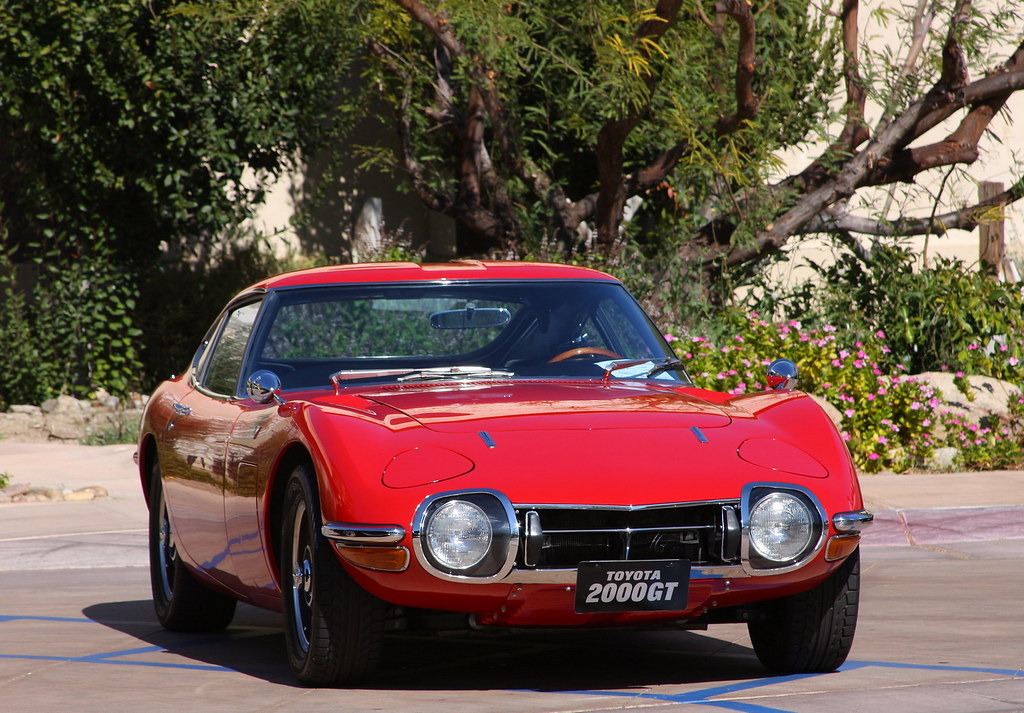
6. **Toyota 2000GT**The Toyota 2000GT is a rare and iconic collectible from the Japanese automaker. This sports car emerged in the Yamaha, featuring a 2.0-liter straight-six engine, delivering 110kW and 175 Nm of power.
Drawing inspiration from the Jaguar E-Type, it featured distinctive elements such as unique headlights, a T-shaped chrome grille, and an aerodynamic windscreen. The cabin combined luxury and sportiness, featuring wood and leather accents with a motorsport-inspired design.
Notably, the Toyota 2000GT gained international fame when it appeared in the James Bond movie ‘You Only Live Twice.’ The car was modified to accommodate the tall actor Sean Connery, becoming a symbol of Japanese craftsmanship and design excellence. Several decades later, fellow Bond star Daniel Craig revealed that his favorite Bond car is the Toyota 2000GT, too.
The production version was unveiled at the 1966 San Francisco Auto Show and was considered Japan’s most expensive car at the time. The 2000GT’s rarity, beauty, and engineering excellence have contributed to its status as a highly sought-after classic in the automotive world. It’s not only a collector’s dream but also a piece of automotive history.
In fact, one of the 2000GTs that the legendary Carroll Shelby turned into a competitive race car was sold at an auction for a cool $2.5 million, which makes one wonder what happened to James Bond’s 2000GT from ‘You Only Live Twice.’
Read more about: 13 Iconic 1980s Classics: Unearthing Automotive Treasures Whose Values Are Soaring for Collectors
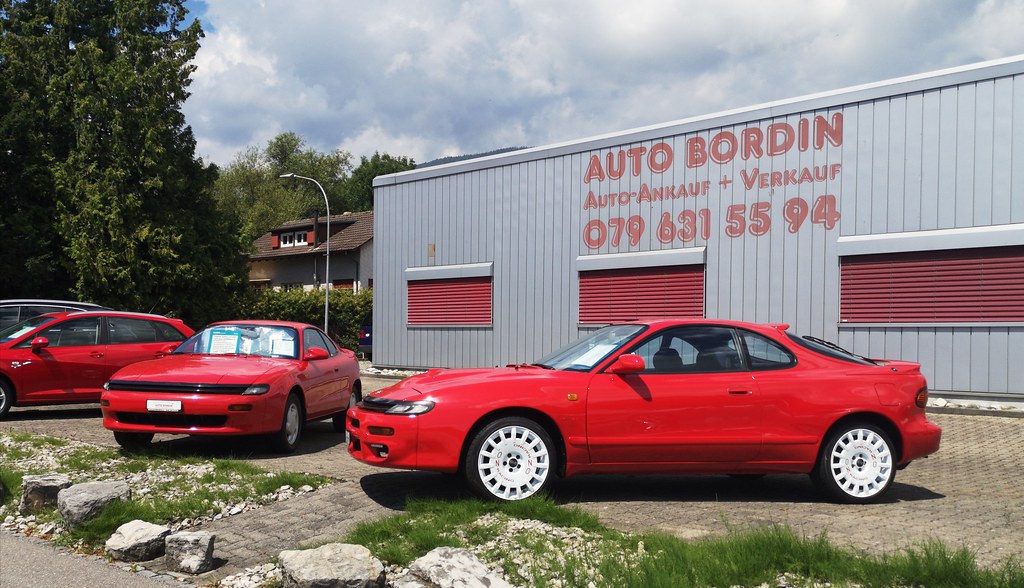
7. **Toyota Celica GT-Four**The Toyota Celica GT-four became a rare collectible for just that reason: rarity. With only 2,500 units produced, of which 2,100 are for the Japanese market, it stands out as a limited-edition gem. These cars were part of Toyota’s foray into the World Rally Championship (WRC) and have distinct features such as riser blocks for the rear wing and provisions for an anti-lag system, which are a testament to their motorsport heritage.
In terms of performance, the GT-Four offers a distinctive driving experience. The 3SGTE engine is known for its linear power delivery, and the car’s handling is characterized by hefty steering and a progressive engine. The right-hand drive adaptation may require some practice, but it’s a rewarding experience for those who appreciate motorsport history.
The Toyota Celica GT-Four’s historical significance has also contributed to its status as a collectible to a certain extent. It played a pivotal role in Toyota’s rally endeavors, with some creative engineering attempts to manipulate turbo inlet restrictors for added horsepower. This led to a 1996 ban, further adding to its unique history.
Despite challenges like limited parts sourcing owing to its rarity, owning one is a dream for collectors and enthusiasts alike. The GT-Four’s significance in Toyota’s rally legacy is further emphasized compared to the modern GR Yaris. While the GR Yaris surpasses the Celica in terms of power and speed, the Celica holds its own place in rally history, with predecessors like the ST185 and ST165 winning titles and securing numerous rally victories.
Continuing our exploration into the captivating realm of classic cars, we now turn our attention to additional vehicles that, despite — or perhaps because of — their discontinuation, have carved out significant niches in the collector market. These models demonstrate a similar trajectory to our initial seven, showcasing how unique engineering, design philosophy, and a dash of rarity can elevate a car far beyond its original retail price. We’ll examine four more examples that have become highly sought after, followed by a critical look at three models that, despite initial aspirations, unfortunately landed on the ‘junk’ heap, failing to appreciate and serving as a stark contrast in the automotive investment landscape.
Car Model Information: 2023 Alfa Romeo Stelvio Ti
Name: Toyota Celica GT-Four
Caption: Toyota Celica GT-Four All-Trac Turbo (ST185, US)
Manufacturer: Toyota
Aka: ubl
Production: October 1986 – June 1999
ModelYears: 1986 – 1999
Assembly: Tahara, Aichi
Class: ubl
BodyStyle: liftback,coupé
Layout: Front-engine, four-wheel-drive layout
Related: Toyota Celica
Categories: 1980s cars, 1990s cars, All-wheel-drive vehicles, Articles with hAudio microformats, Articles with short description
Summary: The Toyota Celica GT-Four is a high performance model of the Celica Liftback that was produced from 1986 to 1999, with a turbocharged 3S-GTE engine, and full-time AWD. It was created to compete in the World Rally Championship, whose regulations dictate that a manufacturer must build road-going versions of the vehicle in sufficient numbers. These vehicles are referred to as “homologation special vehicles”.
The Celica GT-Four came in three generations; the ST165, based on the fourth generation Celica, and manufactured between October 1986 and August 1989; the “super round” shape ST185 produced from September 1989 to September 1993; and the ST205, built from February 1994 to June 1999.
The Celica GT-Four production cars were built at Toyota’s Tahara plant in Aichi Prefecture, Japan, and the rally cars were prepared by Toyota Team Europe in Cologne, Germany.
The Celica GT-Four ST165 made its World Rally Championship (WRC) debut in the 1988 Tour de Corse, with its first WRC victory coming in the 1989 Rally Australia. The ST185’s WRC debut was in the 1992 Rally Monte Carlo, and its first WRC win was in the 1992 Safari Rally, which was one of its four victories in that year. The ST185 was Toyota’s most successful rally car for more than two decades until this position was taken by Toyota Yaris WRC, and now the GR Yaris Rally1. The Celica ST185 won the WRC Drivers’ Championship in 1992, and the WRC Manufacturers’ and Drivers’ championships in 1993 and 1994. The ST205 came in late 1994, and became the official rally car in 1995 with one WRC victory before disqualification. It also won the 1996 European Rally Championship.
The significance of the Toyota Celica GT-Four in WRC history, previously dominated by European manufacturers, is that it was the first time a Japanese car manufacturer entered the WRC with an AWD turbocharged car, took trophies and won the titles. Since then other Japanese manufacturers have been successful in the WRC. Toyota preceded the Mitsubishi (Lancer Evolution and Galant VR-4) and the Subaru (Legacy and Impreza), but not the Mazda (Mazda 323GT-R & 323GT-X). Toyota later exited the WRC to concentrate their racing efforts in Formula One, but in 2017, 11 years after the Celica was discontinued, Toyota returned to WRC with the Toyota Yaris.
Toyota Team Europe (TTE) was also the first to introduce the anti-lag system (ALS) in their Group A ST205 Celica GT-Four rally cars, a technological breakthrough that was later adopted by other teams.
Get more information about: Toyota Celica GT-Four
Buying a high-performing used car >>>
Brand: Toyota Model: Celica GT-Four
Price: $31,450 Mileage: 29,946 mi.
Read more about: Remember These Rides? 14 Legendary Cars We’re Seriously Begging Automakers to Bring Back from Retirement
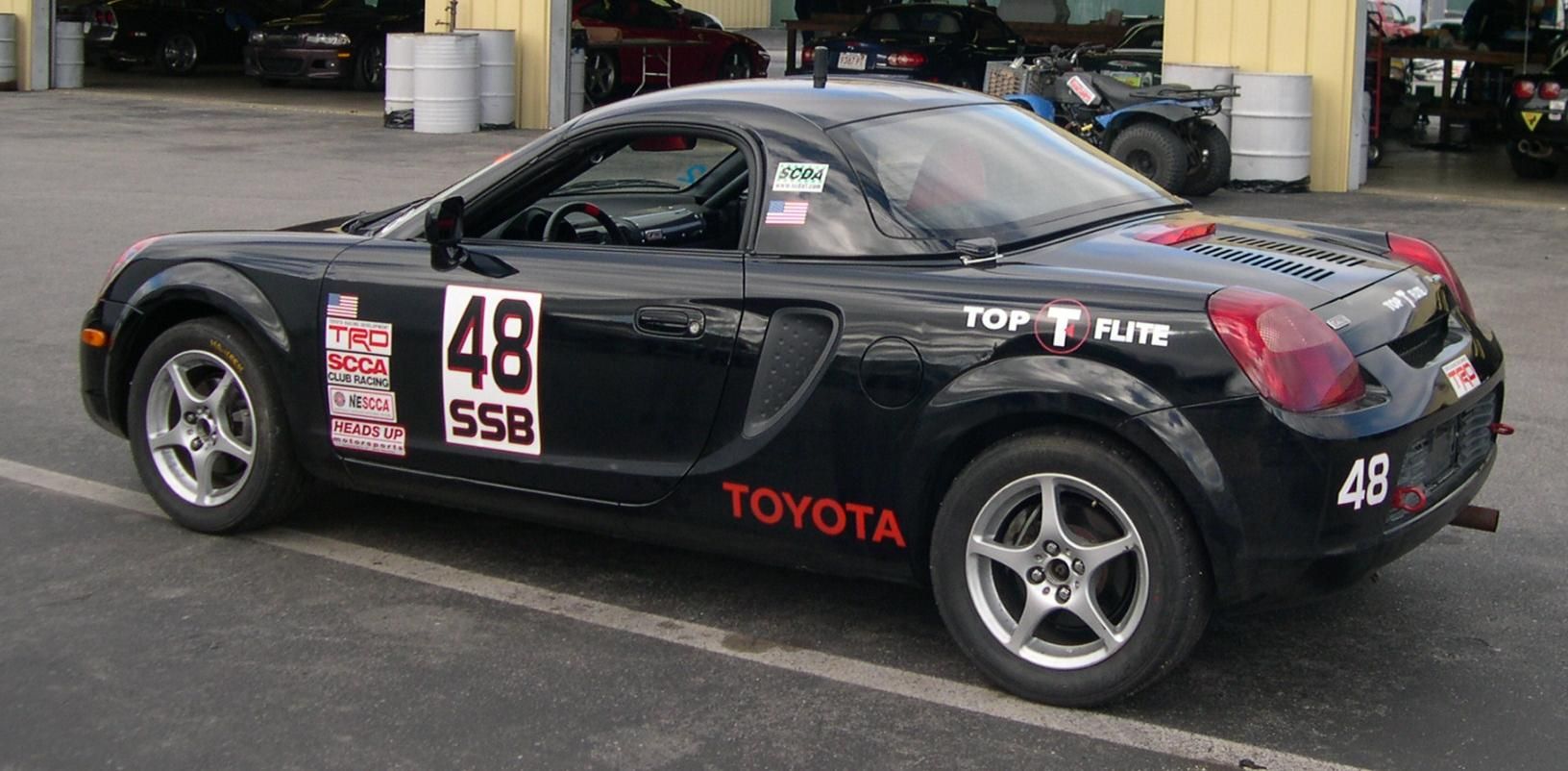
8. **Toyota MR2 Spyder**The third generation of Toyota’s MR2 lineup introduced the MR2 Spyder, a vehicle that boldly prioritized simplicity and lightweight design. This strategic shedding of approximately 700 pounds compared to its predecessors was instrumental in defining its agile and responsive handling characteristics, which quickly became its hallmark. It wasn’t about raw, overwhelming power, but rather the purity of the driving experience it offered.
Equipped with a modest 1.8-liter 1ZZ four-cylinder engine, producing 138 horsepower, the MR2 Spyder’s light mass allowed it to sprint from 0 to 60 mph in a respectable 6.8 seconds. This performance, combined with its exceptionally nimble character and impressive chassis, made it an absolute joy to drive, proving that a car doesn’t need massive horsepower to deliver an exhilarating experience. It appealed to purists who valued driver engagement above all else.
The MR2 Spyder’s exterior design is distinctively characterized by its “frog-eye” headlights and an intriguing blend of both boxy and sleek proportions. This unique appearance unmistakably sets it apart from other mid-engine sports cars of its era, contributing significantly to its burgeoning collectible status. Inside, while the interior might be considered basic by today’s standards, it features quality leather elements on the steering wheel, shift knob, and pedals, even offering the surprising practicality of three cup holders in a two-seater.
A crucial factor behind the MR2 Spyder’s emergence as a rare collectible is its limited production run. The W30 model, produced between 2000 and 2005, was manufactured in fewer numbers than many anticipated, contributing directly to its rarity. This scarcity, coupled with its unique character and engaging performance, makes it highly sought after by collectors and enthusiasts who appreciate its distinctive place in sports car history. The absence of a direct successor from Toyota only further enhances its collectible allure, solidifying its legacy.
Car Model Information: 2023 Alfa Romeo Stelvio Ti
Name: Toyota MR2
Caption: Second generation MR2
Manufacturer: Central Motors
Aka: Toyota MR (France and Belgium)
Production: 1984–2007
Assembly: Sagamihara, Kanagawa
Class: Sports car
Layout: Rear mid-engine, rear-wheel-drive layout
ModelYears: 1985–2007
Categories: 1990s cars, 2000s cars, All Wikipedia articles written in American English, All articles containing potentially dated statements, All articles needing additional references
Summary: The Toyota MR2 is a two-seater sports car which was manufactured and marketed by Toyota from 1984 until 2007 over three generations. It was the first Japanese rear-mid-engine, rear-wheel-drive production car and was sold around the world. The first generation (W10) was produced from 1984 to 1989, the second generation (W20) from 1989 to 1999, and the third generation (W30) from 1999 to 2007.
Conceived as a small, economical and sporty car, the MR2 features a straight-four engine, transversely mounted in front of the rear axle, four-wheel disc brakes, and fully independent coilover suspension with MacPherson struts on each wheel.
The name MR2 stands for either “mid-ship run-about 2-seater” or “mid-engine, rear-wheel-drive, 2-seater”. In French-speaking markets, the vehicle was renamed Toyota MR because the abbreviation “MR2” sounds like the profanity “merdeux” when spoken in French.
Get more information about: Toyota MR2
Buying a high-performing used car >>>
Brand: Toyota Model: MR2 Spyder
Price: $31,450 Mileage: 29,946 mi.
Read more about: The Blink and You Missed It: 10 Iconic Pop-Up Headlights That Vanished From Car Design

9. **Toyota FJ40 Land Cruiser**The Toyota FJ40 Land Cruiser stands as a testament to enduring design and rugged reliability, boasting a remarkable 50-year production run that cemented its legendary status. Revered for its straightforward, durable construction, the FJ40 has cultivated an impeccable reputation among both collectors and off-road enthusiasts. This iconic vehicle possesses a unique, utilitarian charm that consistently makes it a highly coveted classic in the challenging world of four-wheel drives.
Characterized by its modest yet highly capable power, formidable off-road prowess, and an utterly timeless design, the FJ40 Land Cruiser was engineered from the ground up to conquer rugged terrains with unwavering ease. Its legendary reliability, a trait deeply ingrained in the Toyota ethos, has been a pivotal factor in its ascent to collectible status. The no-nonsense, classic aesthetic of the FJ40 has made it an enduring favorite among serious off-road adventurers and discerning vintage car enthusiasts who prioritize function and form.
One of the primary drivers of the FJ40 Land Cruiser’s rarity and value as a collectible is its limited availability, particularly within the United States market. Vintage models, produced from 1960 to 1984, have evolved into prized collector’s items. While these vehicles deliberately eschew modern comforts for a more elemental experience, their inherent robustness and steadfast reliability have rendered them exceptionally desirable. High-end restorations of FJ40s can be exceptionally costly, often prompting collectors to explore importation from overseas markets in search of pristine examples.
However, importing FJ40 Land Cruisers presents its own distinct set of challenges, encompassing intricate paperwork, navigating diverse regulations, and the inherent risks associated with potential forgeries or trustworthiness issues in the export process. Registering the vehicle within the U.S. can also prove to be a complex, state-dependent endeavor. Yet, despite these formidable hurdles, the enduring appeal of the FJ40 Land Cruiser — as an unpretentious, rugged, and profoundly capable off-road machine — ensures its status as a profoundly valuable addition to any serious collector’s garage.
Car Model Information: 2023 Alfa Romeo Stelvio Ti
Name: Toyota Land Cruiser Prado
Caption: 2024 Toyota Land Cruiser 250 VX (J250, Japan)
Manufacturer: Toyota
Aka: unbulleted list
Production: 1984–present
ModelYears: 1985–present
Class: Full-size,SUV
BodyStyle: unbulleted list
Layout: Front-engine, four-wheel-drive
Predecessor: Toyota Land Cruiser (J70)
Categories: 1990s cars, 2000s cars, 2010s cars, 2020s cars, All-wheel-drive vehicles
Summary: The Toyota Land Cruiser Prado (Japanese: トヨタ・ランドクルーザープラド, Hepburn: Toyota Rando-Kurūzā Purado) is a full-size four-wheel drive vehicle in the Land Cruiser range produced by the Japanese automaker Toyota as a “light-duty” variation in the range. “Prado” means meadow or field in Spanish and Portuguese.
The Prado may also be referred to as Land Cruiser LC70, LC90, LC120, LC150 and LC250 depending on the platform. In some markets, it is known simply as the Toyota Prado or the Toyota Land Cruiser.
Up until the J150 model, the Prado was not part of the Land Cruiser range in North America; the rebadged Lexus GX occupied the Prado’s position in luxury trim. The Prado was then introduced there in 2023 and marketed simply as the “Land Cruiser”.
The Prado has a ladder frame chassis, two-speed transfer boxes and rear beam axles. The J70 platform has a front beam axle, while the J90, J120, J150 and J250 platforms have front independent suspension.
As of 2023, the Prado is available in every Toyota market except in Mexico, India, South Korea and some Southeast Asian and South American markets (where the Hilux-based Fortuner/SW4 is offered instead).
Get more information about: Toyota Land Cruiser Prado
Buying a high-performing used car >>>
Brand: Toyota Model: FJ40 Land Cruiser
Price: $31,450 Mileage: 29,946 mi.
Read more about: Classics Endure: 9 Landmark Automotive Designs Defined by Longevity and Timeless Appeal

10. **Toyota Mega Cruiser**For those who have ever pondered what a Japanese interpretation of the iconic Humvee might entail, the Toyota Mega Cruiser offers a definitive answer. This formidable vehicle, essentially Toyota’s take on the military-grade, all-terrain monster, even presented several notable advantages over its American counterpart, the Hummer H1. It boasted a roomier interior and was larger in overall dimensions, yet remarkably, it managed to be lighter than the H1, a significant engineering feat.
Much like the original Hummer, the Mega Cruiser was predominantly produced for military applications, specifically for the Japanese Defense Forces. An estimated 3,000 units were supplied to Japan’s military during its operational production run, highlighting its robust, defense-oriented pedigree. However, a civilian version of this behemoth also made its way to market, albeit in an incredibly limited capacity. It is widely believed that only approximately 133 of these large SUVs were ever produced for the civilian market in total, with an even rarer subset of around 20 units being configured in a left-hand drive orientation.
For much of its history, importing Mega Cruisers was largely illegal in many countries, adding another layer of mystique and exclusivity to its legend. This changed from 2020 onwards, as import-legal examples began to become available, sparking renewed interest. This peculiar all-terrain titan remains one of the rarest and undeniably strangest vehicles within Toyota’s extensive historical catalog. As one might anticipate, many keen collectors are perpetually desperate to acquire one of these unique machines, recognizing its unparalleled place in automotive history.
Pinpointing an exact market price for the Mega Cruiser can be challenging due to its extreme rarity and infrequent appearances for sale. However, recent auction activity provides a glimpse into its escalating value. For instance, a user on the popular auction platform Bring a Trailer reportedly bid up to $144,000 for a Mega Cruiser in April 2024. While this substantial bid failed to meet the seller’s reserve price, it clearly underscores the vehicle’s significant and growing desirability among collectors, solidifying its position as a truly unique and valuable collectible.
Car Model Information: 2023 Alfa Romeo Stelvio Ti
Name: Toyota Mega Cruiser
Caption: A Toyota Mega Cruiser BXD20 used by the Japanese-Air Self Defense Forces at Hamamatsu Air Base.
Manufacturer: Toyota
Production: 1995–2001,3,000 produced
Class: Full-size,SUV
BodyStyle: SUV
Weight: 2850 kg
Abbr: on
Wheelbase: 3395 mm
Length: 5090 mm
Width: 2170 mm
Height: 2075 mm
Engine: Toyota B engine#15B-FTE,straight-4
Transmission: Toyota A transmission#A443F,automatic transmission
Layout: Front-engine, four-wheel-drive layout
Assembly: Gifu, Gifu
Categories: 1990s cars, 2000s cars, All-wheel-drive vehicles, All articles with unsourced statements, Articles containing Japanese-language text
Summary: The Toyota Mega Cruiser (Japanese: トヨタ・メガクルーザー, Toyota Megakurūzā) is a large, heavy-duty four-wheel-drive SUV introduced by Toyota in 1995. As the largest 4WD vehicle ever built by Toyota, its design resembles that of the Humvee and Hummer H1.
Like the Humvee, the Mega Cruiser was originally designed primarily for military use with the vehicle seeing duty as a transport vehicle in the Japan Self Defense Forces (see ja:高機動車).
Sold exclusively in Japan via Toyota Store locations, the Mega Cruiser was also used by prefectural police, the Japan Automobile Federation and fire/rescue departments. As of 2020, it was reported that Toyota had produced 3,000 units before production was halted. A total of 133 Mega Cruisers were sold to civilians.
Get more information about: Toyota Mega Cruiser
Buying a high-performing used car >>>
Brand: Toyota Model: Mega Cruiser
Price: $31,450 Mileage: 29,946 mi.
Read more about: Unveiling Automotive Endurance: The 10 Imported Models Most Likely to Clock 250,000 Miles
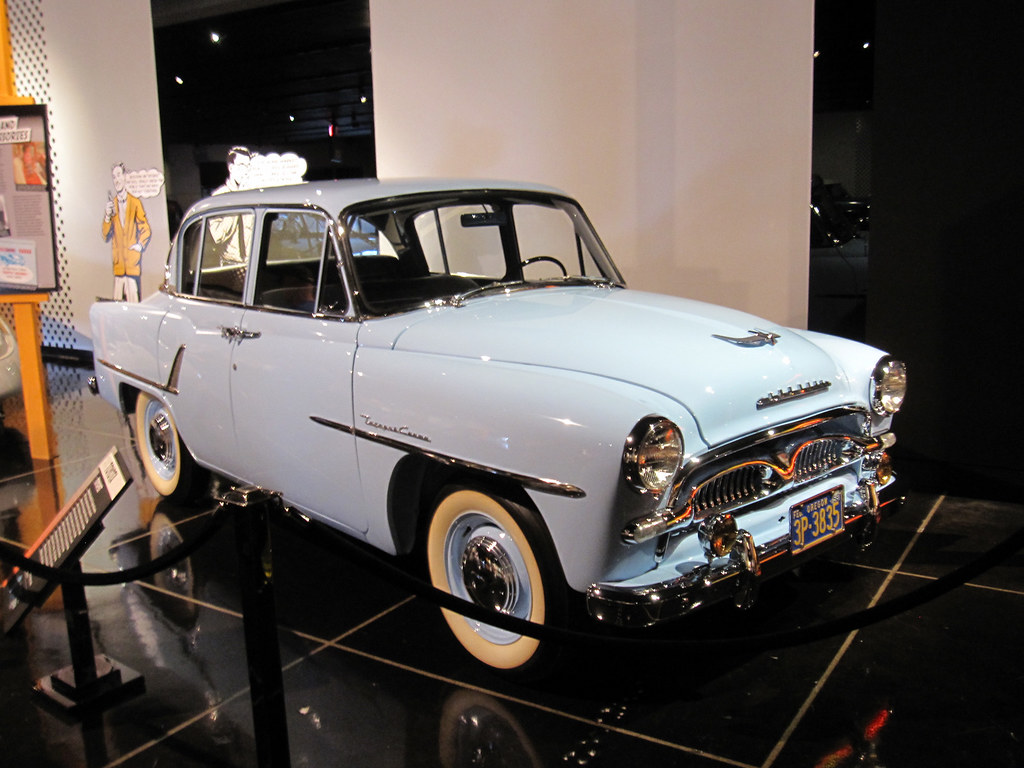
11. **Toyota Toyopet Crown**When envisioning the earliest Japanese automobiles to successfully penetrate the U.S. market, many enthusiasts instinctively recall iconic 1970s models like the Datsun 240Z. However, the true genesis of Japanese-American automotive history predates these legends significantly, reaching back much further into the mid-20th century. Holding the distinguished title of the first Japanese car ever sold in the United States was none other than the Toyopet Crown.
This pioneering vehicle also carries the honor of being Toyota’s inaugural full-sized passenger car, a critical milestone in the company’s global expansion. Today, surviving examples of the Toyopet Crown are exceedingly rare, particularly original, unmolested models. Should an all-original specimen surface, especially one of the very few that were actually U.S.-registered, it can command a truly hefty fee from discerning collectors, testament to its historical significance and profound scarcity.
There’s a very compelling reason for the vehicle’s extreme scarcity in the American market. While the Toyopet Crown performed commendably in its native Japan, it was broadly deemed unsuitable for the specific demands and preferences of the 1950s U.S. market. James McGraw, who served as Toyota’s North American Sales Administrator at the time, famously summarized its predicament by stating, “This thing is underpowered, overpriced, and it won’t sell.” This blunt assessment proved prophetic, as the car struggled to connect with American buyers.
Further compounding its market challenges, the name “Toyopet” itself, which naturally broke down into connotations of “toy” and “pet,” may have inadvertently conjured images that simply did not resonate with or appeal to the American car buyers of that era who sought robust, serious vehicles. Consequently, a mere 287 units were sold during the vehicle’s entire U.S. market run. Toyota prudently decided to withdraw from the American market in 1960, only to return later after meticulously developing something far more suitable and appealing to American tastes, learning invaluable lessons from the Toyopet Crown’s initial, albeit significant, misstep.
5 Discontinued Cars That Stayed Junk
Now, not every discontinued car is destined for a storied future as a valuable collector’s item. In fact, for every model that appreciates significantly, there are countless others that, despite initial efforts to innovate or carve out a niche, demonstrably fail to garner respect or retain any substantial value long after production ceases. These vehicles are often plagued by persistent reliability issues, suffer from outdated or aesthetically unappealing designs, develop poor reputations, or simply become impossible to maintain due to scarce parts availability. Consequently, they continue to depreciate rapidly and are widely dismissed as “junk” by both seasoned enthusiasts and the broader market.
This segment of our discussion will critically examine three discontinued cars that, for a multitude of reasons, emphatically did not stand the test of time. Rather than ascending to the ranks of coveted classics, these vehicles have perpetually struggled with a litany of lingering issues that have severely undermined their long-term value and appeal. Sometimes, this depreciation is a direct result of glaring build quality problems or utterly underwhelming performance figures that left much to be desired. In other instances, a model’s styling, technology, or overarching brand perception simply failed to resonate with either contemporary buyers or future collectors.
The critical absence of robust aftermarket support or the inherent difficulty in sourcing replacement parts also plays a profoundly crucial role in accelerating a car’s demise on the resale market, turning what might have been a minor flaw into a major impediment to ownership. Understanding precisely why certain discontinued cars fail to appreciate offers invaluable insights into the complex factors that actively prevent vehicles from ever achieving collectible status. It also serves as a potent cautionary tale for prospective buyers who might be considering these particular models for long-term ownership or, optimistically, as an investment opportunity.
While these next three cars certainly held a certain promise in their respective heydays, today they are predominantly remembered more for their glaring flaws and shortcomings than for any fleeting strengths they may have possessed. In this concluding section, we will delve deeply into the often-unflattering stories behind these ‘junk-status’ cars, meticulously examining what went fundamentally wrong and why their values stubbornly remain stubbornly low. From reliability nightmares to polarizing designs and poor market reception, these vehicles collectively serve as powerful reminders that not every discontinued car is destined to become a treasure; some are simply cautionary tales in automotive history.
Car Model Information: 2023 Alfa Romeo Stelvio Ti
Name: Toyota Corona
Caption: Tenth generation Toyota Corona (T210, Hong Kong)
Manufacturer: Toyota
Production: July 1957 – December 2001
Class: unbulleted list
Related: unbulleted list
Layout: unbulleted list
Predecessor: Toyopet Master
Successor: unbulleted list
Categories: 1950s cars, 1960s cars, 1970s cars, 1980s cars, 1990s cars
Summary: The Toyota Corona (Japanese: トヨタ・コロナ, Toyota Korona) is an automobile manufactured by the Japanese automaker Toyota across eleven generations between 1957 and 2001. On launch, the Corona was Toyota’s second-highest product in their range, just below the Crown. The Corona was marketed in the JDM at Toyota’s Toyopet Store dealership channels, and the Corona was one of Toyota’s first models exported to other global markets, followed by the smaller Toyota Corolla.
The Corona played a key role in Toyota’s North American success. Having previously entered the North American passenger car market in 1957 as Toyopet, the company met little success, withdrawing in 1961. The company re-entered the North American market in June 1964, rebranded as Toyota, introducing its third-generation Corona with more modern technology and numerous standard features. Toyota advertised the car prominently, with the company’s first television commercial featuring the Corona. The car was well received, winning the 1969 Road Test Import Car of the Year. The Corona helped boost U.S. sales of Toyota vehicles to more than 20,000 units in 1966 (a threefold increase), making the company the third-best-selling import brand in the United States by 1967. In 2014, editors at Car and Driver called the Corona one of the best Toyotas ever made, arguing that Toyota survived long enough to thrive in America because of the Corona.
By 1968, the Corona name was used on a larger platform, marketed as the Corona Mark II. The Corona itself was marketed under numerous nameplates worldwide, including in European markets as Carinas, and a variant of the Corona was offered in various markets as the Carina. The Corona was ultimately replaced in Japan by the Toyota Premio; in Europe by the Toyota Avensis; and in Asia, Pacific markets, and the Americas by the Toyota Camry.
The nameplate corona derives from the Latin word for “crown”, the sedan taking its place just below Toyota’s similarly named flagship, the Toyota Crown.
Get more information about: Toyota Corona
Buying a high-performing used car >>>
Brand: Toyota Model: Toyopet Crown
Price: $31,450 Mileage: 29,946 mi.
Read more about: The Ultimate Guide for Pet Owners: Uncovering the Top 14 Vehicles for Safe and Comfortable Travel with Canine Companions

12. **Pontiac Aztek (2001–2005)**The Pontiac Aztek holds a somewhat infamous place in automotive history, frequently cited as one of the ugliest and most poorly received cars ever manufactured. Conceived as a pioneering crossover utility vehicle, intended to appeal to adventurous younger demographics, the Aztek’s aggressively controversial design and undeniably awkward proportions made it an immediate and frequent target of widespread ridicule from the moment it debuted. Its styling was so unconventional that it veered into outright alienation, characterized by clunky lines, an abundance of oversized plastic cladding, and an undeniably unbalanced profile that was difficult for many to appreciate.
Beyond its polarizing aesthetics, the Aztek was further hampered by its mediocre performance and consistently subpar build quality. It came equipped with a V6 engine that, while adequate for basic transportation, was utterly uninspiring in its delivery, contributing to a lackluster driving experience. The interior, despite offering commendable spaciousness, severely lacked refinement and suffered from the pervasive use of cheap, uninviting materials. Persistent reliability issues and questionable fit-and-finish further eroded its already fragile reputation, cementing its status as a vehicle of compromise.
Despite being packed with genuinely innovative features for its time, such as an optional camping package and a highly versatile interior that could be configured in numerous ways, the Aztek never truly caught on with its intended buyers. Its dismal sales figures and overwhelming negative public perception inevitably led to its premature discontinuation after a mere five years of production. Today, the Aztek remains less a collectible and more of a punchline in automotive discussions, a symbol of design gone awry.
Its profound lack of desirability translates directly into exceptionally low market values, meaning that even clean, running examples are often remarkably inexpensive. However, the inherent difficulty in sourcing replacement parts, coupled with persistently low demand, ensures that its value remains minimal, offering little to no potential for appreciation. While some niche enthusiasts have attempted to re-evaluate the Aztek as a quirky cult classic due to its sheer uniqueness, it largely remains an unloved and undervalued relic, serving as a textbook example of how radical design missteps and poor execution can irrevocably doom a car’s future.
Car Model Information: 2003 Pontiac Aztek Base Fwd 4dr SUV
Name: Pontiac Aztek
Manufacturer: General Motors
Production: July 2000 – December 2004
Assembly: Ramos Arizpe
Designer: Tom Peters (chief designer: 1997)
Class: Mid-size crossover SUV
BodyStyle: SUV
Platform: GM U platform
Related: Buick Rendezvous
Layout: Front-engine, front-wheel-drive layout
Engine: General Motors 60° V6 engine#LA1,V6
Transmission: GM 4T65-E transmission,Automatic transmission
Wheelbase: 108.3 in (2,751 mm)
Length: 182.1 in (4,625 mm)
Width: 73.7 in (1,872 mm)
Height: 66.7 in (1,694 mm)
Weight: 3,779–4,043 lb (1,714–1,834 kg)
Predecessor: Pontiac Sunrunner
Successor: Pontiac Torrent
ModelYears: 2001–2005
Categories: All-wheel-drive vehicles, All articles needing additional references, All articles with unsourced statements, Articles needing additional references from October 2013, Articles with short description
Summary: The Pontiac Aztek is a mid-size crossover SUV marketed by General Motors introduced in 2000 for the model years 2001 through 2005. As a four-door crossover with front-wheel drive and optional all-wheel drive, the Aztek featured a four-speed automatic transmission with a V6 engine. Marketed by Pontiac as a “sport recreational vehicle,” the Aztek used a shortened platform shared with GM’s minivans (e.g., the Pontiac Montana) featuring 94 cubic feet of cargo room with its rear seats removed. The design employed conventional rear outswing doors rather than sliding doors, and a split rear tailgate, the lower section formed with seat indentations and cupholders. Other features included a front center console that doubled as a removable cooler, optional rear stereo controls in the cargo area, optional sliding cargo floor with grocery compartments, and optional camping package with an attachable tent and air mattress.
Get more information about: Pontiac Aztek
Buying a high-performing used car >>>
Brand: Pontiac Model: Aztek
Price: $1,499 Mileage: 157,677 mi.

13. **Chevrolet SSR (2003–2006)**The Chevrolet SSR (Super Sport Roadster) emerged as a visually striking, retro-styled pickup/roadster hybrid that, while initially sparking widespread curiosity, ultimately failed to cultivate a sustainable market presence. This unique vehicle boldly combined a power-retractable hardtop convertible roof with a practical pickup truck bed, all wrapped in a distinctive styling package inspired by Chevrolet trucks of the 1940s. While its aesthetic was undoubtedly visually striking and unlike anything else on the road, the SSR was plagued by a multitude of inherent flaws that severely hindered its long-term value proposition and overall market acceptance.
Mechanically, the SSR was built upon GM’s robust truck platform, yet its performance, while respectable, proved underwhelming when compared to the dedicated sports cars and pickups that populated its competitive landscape. Its V8 engine options were adequate for daily driving but offered nothing particularly groundbreaking in terms of power or excitement, leaving many enthusiasts wanting more. The interior, though arguably better appointed than one might expect for such a niche segment, quickly felt outdated and lacked the premium feel of its price point. More critically, the SSR’s unique and somewhat experimental design inevitably compromised both its ride quality and handling dynamics, leading to a driving experience that was often described as awkward and unrefined.
The SSR’s highly specialized and niche appeal simply wasn’t sufficient to sustain robust sales volumes, leading to its production ending after a relatively short four-year run with disappointingly low total numbers manufactured. Today, the SSR continues to struggle significantly in the used car market, largely due to its mixed reputation and the inherently awkward blend of vehicle types it attempted to fuse. Enthusiast interest in the SSR remains notably limited, and consequently, its market values have remained stubbornly low, with only a few exceptionally well-maintained or particularly rare color examples managing to hold any semblance of a premium.
Ultimately, the SSR stands as a compelling case study illustrating how an overly unusual design and an unclear market positioning can collectively conspire to cause a discontinued car to rapidly lose value and be largely overlooked by the vast majority of collectors. It highlights the fine line between innovation and eccentricity, suggesting that sometimes, blending too many disparate concepts can dilute a vehicle’s core identity and long-term appeal, consigning it to the ‘junk’ category despite its intriguing premise.
Car Model Information: 2004 Chevrolet SSR LS
Name: Chevrolet SSR
Manufacturer: Chevrolet
Production: 2003–2006
ModelYears: 2003–2006
Assembly: Lansing, Michigan
Class: Pickup truck
BodyStyle: ubl
Platform: GMT360
Related: ubl
Layout: Front-engine, rear-wheel drive layout
Engine: ubl
Transmission: ubl
Wheelbase: 116.0 in
Abbr: on
Length: ubl
Width: 78.6 in
Height: ubl
Designer: ubl
Categories: All articles needing additional references, All articles with unsourced statements, Articles needing additional references from July 2008, Articles with short description, Articles with unsourced statements from August 2023
Summary: The Chevrolet SSR (Super Sport Roadster) is a retro-styled and retractable hardtop convertible pickup truck manufactured by Chevrolet between 2003 and 2006.
During the 2003 and 2004 model years, the SSR used General Motors’ 5.3 L 300 hp (224 kW; 304 PS) Vortec 5300 V8. Performance was 7.7 seconds for 0–60 mph (0–97 km/h) with a 15.9 second 1⁄4 mile (402.3 m) time at 86.4 mph (139.0 km/h).
For the 2005 model year, the SSR used the 390 hp (291 kW; 395 PS) LS2 V8 engine also used in the C6 Corvette, Trailblazer SS, and Pontiac GTO, now offering a manual transmission option, the six-speed Tremec, for the first time. Performance improved dramatically with the LS2; the 6-speed manual version had an advertised 0–60 mph (97 km/h) acceleration time of 5.29 seconds. In addition, GM badges were added to the vehicle.
For 2006, output of the LS2 increased to 395 hp (295 kW; 400 PS).
Get more information about: Chevrolet SSR
Buying a high-performing used car >>>
Brand: Chevrolet Model: SSR
Price: $20,899 Mileage: 54,685 mi.
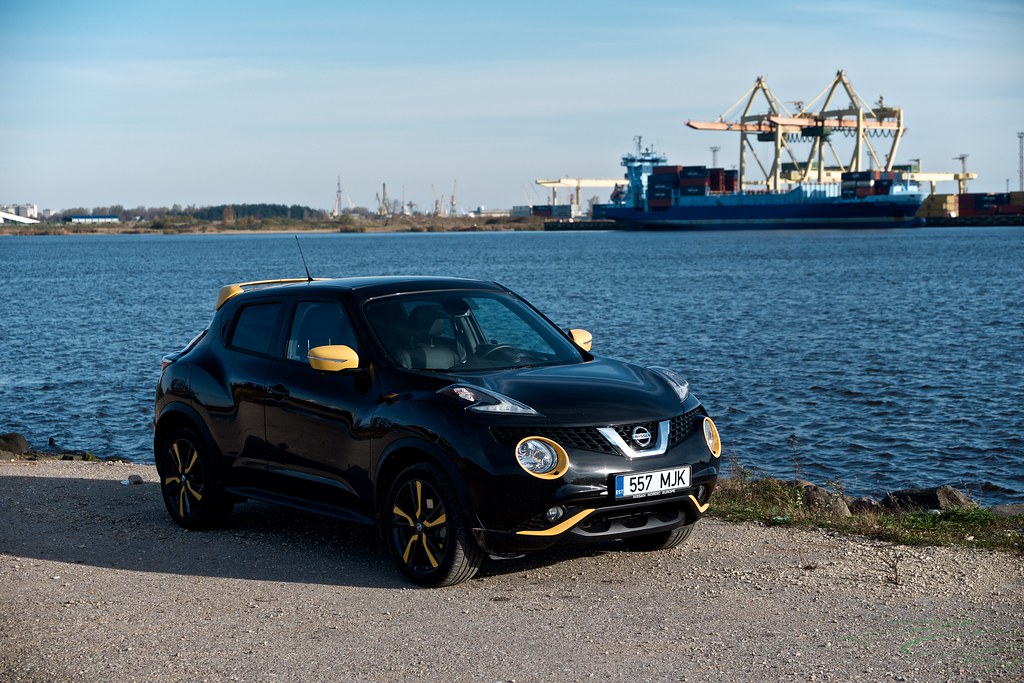
14. **Nissan Juke (First Generation, 2010–2017)**The first-generation Nissan Juke was a compact crossover that made its debut with a design aesthetic so bold and polarizing that it instantly divided opinion from the moment of its launch. Its distinctive bulbous, bug-eyed front end and undeniably quirky overall styling certainly attracted attention, creating a memorable presence on the road. However, this radical approach also alienated a significant number of traditional car buyers who preferred more conventional designs. While the Juke did manage to find a niche among younger drivers actively seeking something distinctively different, it ultimately failed to build a lasting or robust enthusiast base that typically underpins long-term collector value.
Beyond its highly controversial looks, the Juke’s performance and interior quality were, at best, decidedly average within its competitive segment. It offered a range of small turbocharged engines, which provided adequate power for urban commuting, but the overall driving experience often lacked refinement and rarely delivered any genuine excitement. The interior itself was noticeably cramped, particularly for rear passengers, and featured materials that, regrettably, did not hold up well over time, quickly showing signs of wear and age. While its reliability was generally average, it was certainly not standout, failing to offer a compelling reason for long-term ownership or investment.
The Juke’s diminutive size and its inherently odd styling severely limited its broad appeal in an increasingly competitive market that was rapidly shifting towards larger, more conventionally styled SUVs and crossovers. While it enjoyed moderate sales success during its initial production run, it has conspicuously failed to develop any significant collector market since its discontinuation. Parts availability remains reasonable due to its relatively recent departure from production, but overall demand for the vehicle is weak, resulting in a consistent and often steep depreciation curve that firmly places it in the ‘junk’ category for collectors.
The Nissan Juke’s trajectory serves as a poignant illustration of how a polarizing design and a fundamentally limited appeal can combine to ensure that discontinued cars remain stubbornly undervalued and largely unattractive to serious collectors. It underscores the critical importance of a design that ages gracefully and a driving experience that transcends mere utility, factors that are often overlooked in the pursuit of immediate market differentiation. The Juke, while certainly unique, stands as a reminder that being different doesn’t always translate to long-term desirability or appreciation.
Discontinued cars often provoke a fascinating spectrum of reactions — some models quietly fade into obscurity, becoming mere footnotes in automotive history, while others spectacularly ascend to legendary status, commanding impressive values and unwavering devotion over time. As we’ve meticulously explored throughout this extensive article, the critical distinction between a valuable post-production gem and a perpetual market dud frequently hinges on a complex interplay of factors: including the integrity of its original design, its enduring cultural relevance, robust mechanical reliability, and its ability to consistently attract and retain fervent collector appeal.
Vehicles that truly resonate, like the Toyota Supra Mk4, the Acura NSX, or even the rugged Toyota FJ40 Land Cruiser, continue their remarkable ascent in value precisely because they offered an unparalleled combination of performance, engineering excellence, and a deep, visceral emotional appeal that effortlessly transcended their original production years. These automotive icons meticulously built their stellar reputations during their active lifespans, only to grow exponentially more revered with the passage of time, the increasing scarcity of pristine examples, and the powerful, nostalgic pull they exert on generations of enthusiasts. They are, in essence, tangible pieces of automotive dreams.
Conversely, cars such as the Pontiac Aztek, the Chevrolet SSR, or the polarizing Nissan Juke unequivocally illustrate how fundamentally flawed execution, misaligned marketing strategies, or simply an awkward, unappealing design can irrevocably doom a car’s future market standing. While a very small, dedicated contingent might appreciate their distinctive quirks or even attempt to reframe them as obscure cult classics, the broader automotive market has decisively moved on, leaving behind a legacy of consistently low resale values and a notable absence of enthusiastic collector support. In many of these unfortunate cases, these cars were fundamentally let down by glaring build quality issues, awkward or unattractive designs, or a profound inability to deliver a truly meaningful or engaging driving experience that captivated buyers.
The striking disparity between these two contrasting groups isn’t always immediately obvious at a vehicle’s launch — indeed, some of the most valuable cars today were initially slow sellers, and conversely, some of our ‘junk-status’ vehicles actually moved significant volumes before inevitably falling out of favor. What unequivocally distinguishes the two categories over the critical long term is the enduring power and staying prowess of their engineering excellence, combined with their deep emotional resonance. Cars that are genuinely engaging to drive, meticulously well-built, and possess a timeless, visually iconic aesthetic inevitably attract and sustain a devoted following. Those vehicles that were rushed to market, conceived as mere gimmicks, or fundamentally failed to connect on a deeper level with their target audience rarely, if ever, manage to recover their value once production is discontinued.
For all automotive enthusiasts, serious collectors, or even casual buyers with a keen interest in older vehicles, the overarching takeaway is crystal clear and profoundly important: always conduct thorough research, meticulously understand a vehicle’s long-term reputation, and crucially recognize that not every discontinued car is predestined for greatness or financial appreciation. Some truly become automotive legends, revered treasures worth thousands upon thousands of dollars — while others, unfortunately, remain poignant cautionary tales, serving as stark reminders of missteps in design, engineering, or market strategy. In the complex, ever-evolving world of discontinued cars, time, with its unforgiving clarity, does not forgive all flaws — it simply and definitively clarifies which ones genuinely mattered and which ones were ultimately terminal. Keep your eyes sharp, your research thorough, and your passion pure, for the automotive world is full of both hidden gems and forgotten failures, waiting to be discovered or, perhaps, rightfully left behind.”

